The ASUS ZenFone 2 Review
by Brandon Chester on May 26, 2015 8:00 AM ESTGPU Performance
As I’ve already mentioned a few times, both models of the ZenFone 2 use the PowerVR G6430 GPU from Imagination Technologies. This is the same GPU used in Apple’s A7 chip, although the implementation in A7 likely has a max GPU clock of around 450MHz, while in Atom Z3560 and Z3580 it peaks at 533MHz. While one would think this would give the ZenFone 2 a lead over the Apple A7 based iOS devices, factors like driver optimization can also play a role.
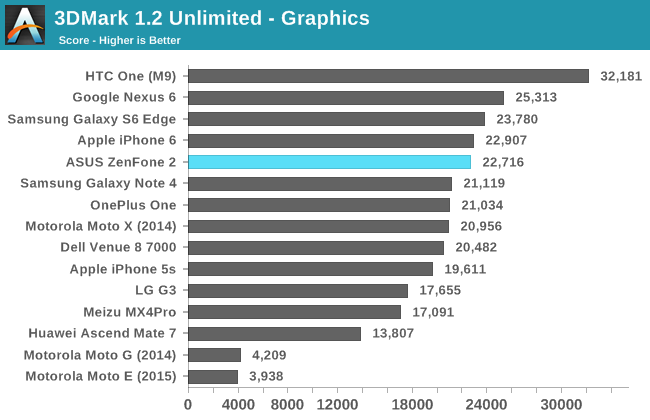
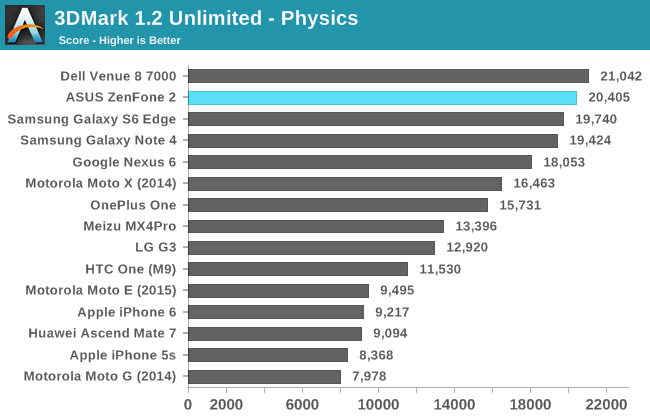
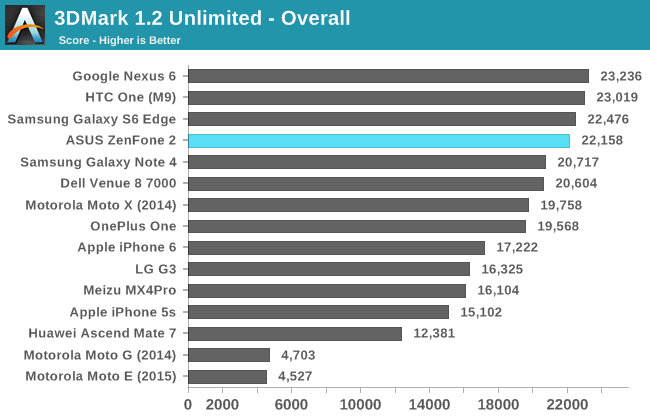
The ZenFone’s performance in 3DMark is very good, and is one of the highest that we’ve seen. Much of this is due to the score in the physics test, which bests even the Galaxy S6 that had previously topped the chart, and second only to the Venue 8 7000 tablet. In the graphics test it achieves a score similar to that of the iPhone 6. The overall weighted average of the two tests puts the ZenFone 2 in fourth place, between the Galaxy Note 4 and the Galaxy S6 Edge.
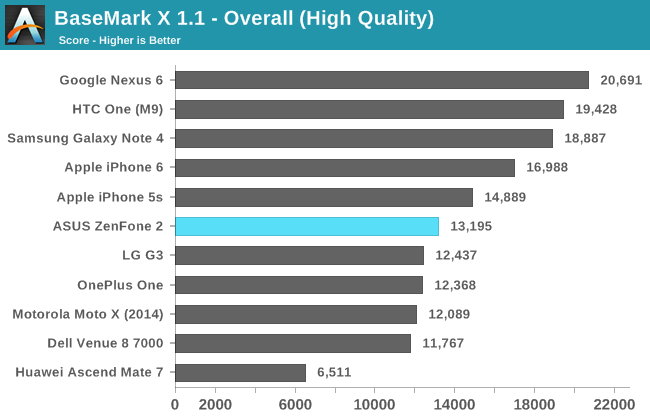
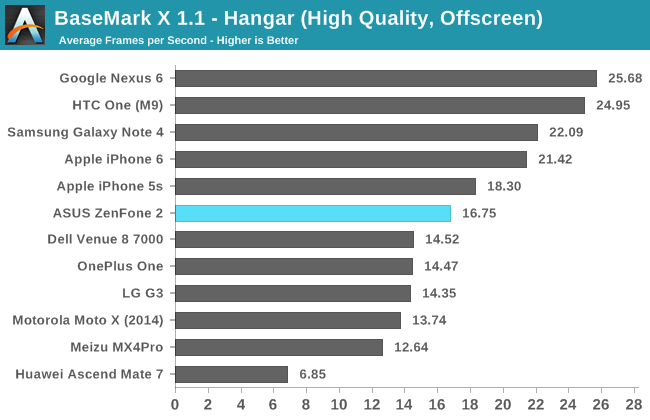
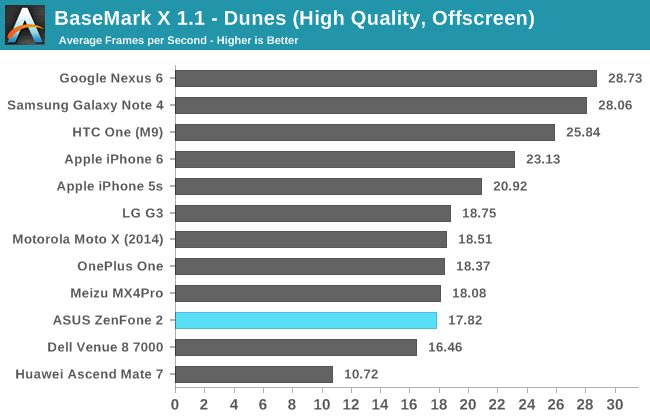
In BaseMark X we see that the ZenFone 2 stumbles compared to the G6430 implementation in the iPhone 5s. Despite the higher clock speed on the GPU, it trails the iPhone 5s in both the Dunes and Hanger tests. The final score ends up right in the middle of the chart. It’s not as quick as the iPhone 5s and faster devices, but it’s quicker than those that use Snapdragon 801 and Adreno 330.
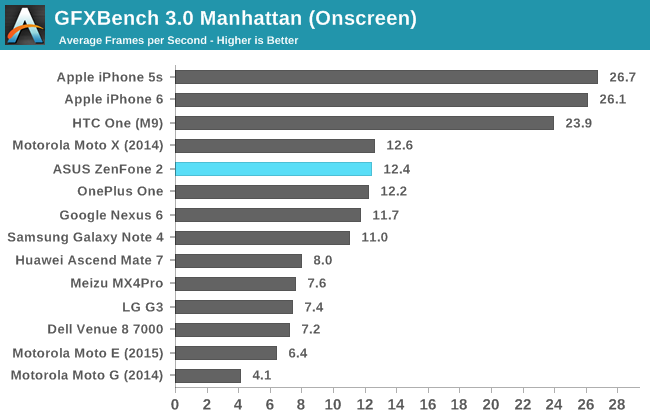
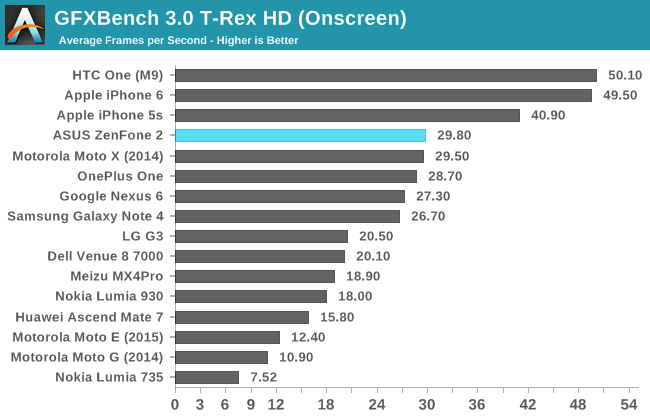
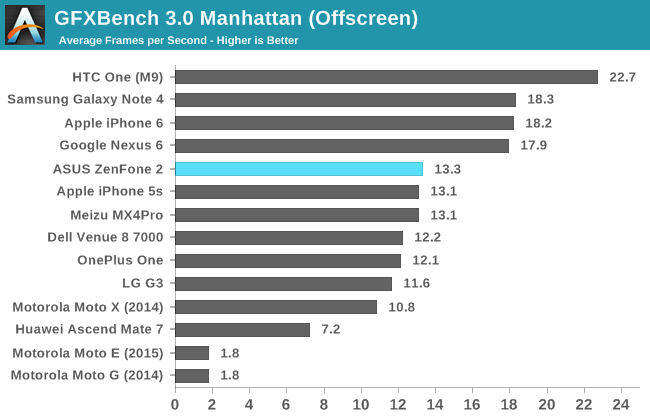
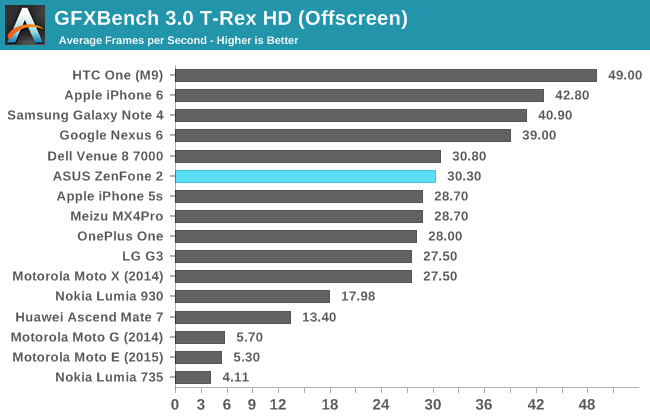
Our last benchmark is GFXBench. In the off screen 1080p tests we see that the ZenFone 2 is slightly quicker than the iPhone 5s in both Manhattan and T-Rex HD. The differences are small enough to be attributed to test variance, but the important point is that the G6430 GPU ends up being as quick as the implementation in Apple’s A7 SoC. The fact that it’s only as quick as the iPhone 5s despite its higher clock speeds indicates that PowerVR GPU drivers on Android are not as well optimized as on iOS, and it would be great to see GPU performance improve a little bit down the road via driver improvements.
Overall, the GPU in the ZenFone 2 is more than fast enough to run the OS smoothly and run any 2D or 3D games a user will want to play. The performance is substantially better than any other phone at this price point. It looks like there's still a gap between the optimization of PowerVR GPU drivers on iOS versus Android, but despite that the ZenFone 2 still delivers performance that I know won't disappoint any of its buyers.










147 Comments
View All Comments
piaw - Tuesday, May 26, 2015 - link
I don't want Windows Phone on this, I want full on Windows 10 with a telephony app! This will eliminate the "app gap" (sure, might have to use desktop mode, but for something like say, Garmin Express, I don't need to even see the UI after installation). With 4GB of RAM, this will outrun any number of existing full Windows tablets!mkozakewich - Tuesday, May 26, 2015 - link
If needed, it's also possible to have Windows and Android on at the same time with a button on each desktop to switch to the other OS.(Unless MS was brilliant and enabled Continuum to switch from a Windows Phone UI to a Desktop UI?)
darkich - Tuesday, May 26, 2015 - link
The only possible reason why this is a $300 device, is the giveaway from Intel.Their most advanced Atom yet couldn't be sold for its real price and the fact that it can only compete with old 28nm and 20nm ARM chips explains why is that the case.
Speedfriend - Tuesday, May 26, 2015 - link
This isn't the most advanced Atom yet, it is the last generation phone SOC.Intel doesn't give away any chips, it helps OEMs use intel SOCs by contributing to the higher bill of materials that using an Intel SOC entailed. As it adds features to its SOC, the contra revenue will go down.
SunLord - Tuesday, May 26, 2015 - link
Technically this is the current generation phone SOC as they've not launched an airmont based phone SOC yetmenting - Tuesday, May 26, 2015 - link
The CPU being free or not won't make more than $50 difference though....lefty2 - Tuesday, May 26, 2015 - link
The ZenFone is cheap because of Intel's contra revenue scheme. Basically, Intel sells the SoC to Asus for $0.tipoo - Tuesday, May 26, 2015 - link
I read Asus ends up paying 5 dollars per chip rather than the 30+ some SoCs sell at, but yeah, close enough.CrazyElf - Tuesday, May 26, 2015 - link
For it's price, it's not a bad phone to be honest.I'd love to see what Asus can do in future generations and what a flagship that can rival high end phones like the Galaxy Note X would be able to pull off.
Equally interesting will be what future Intel SOCs do. I would like to see an even bigger GPU loaded onto the phone.
UltraWide - Tuesday, May 26, 2015 - link
What good is all this performance if the phone has ran out of batteries and you can't use it?